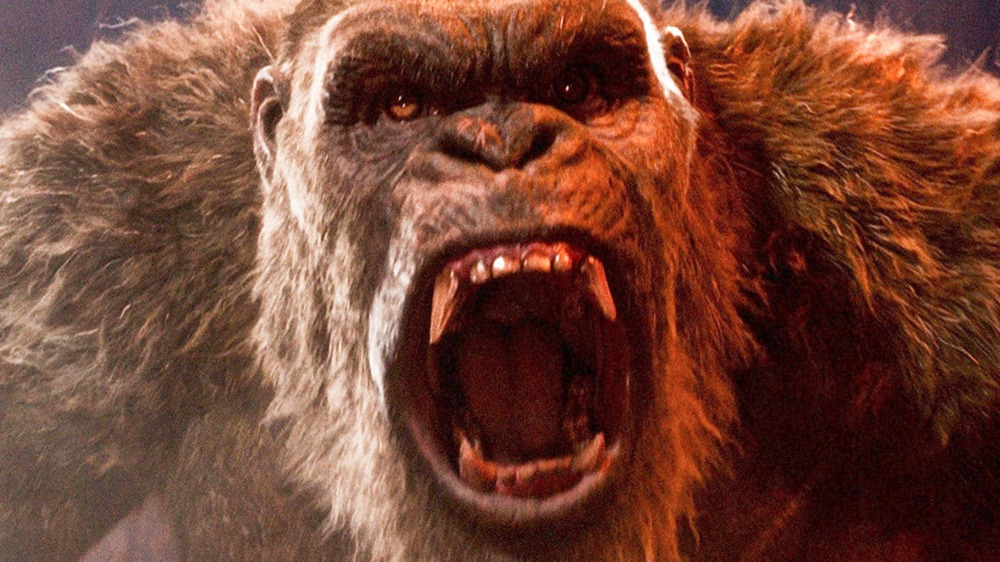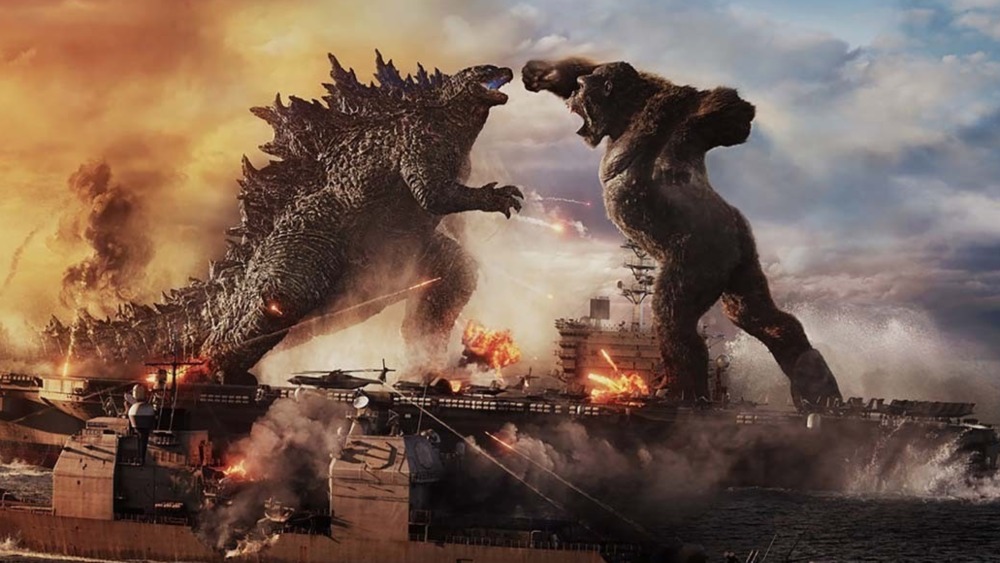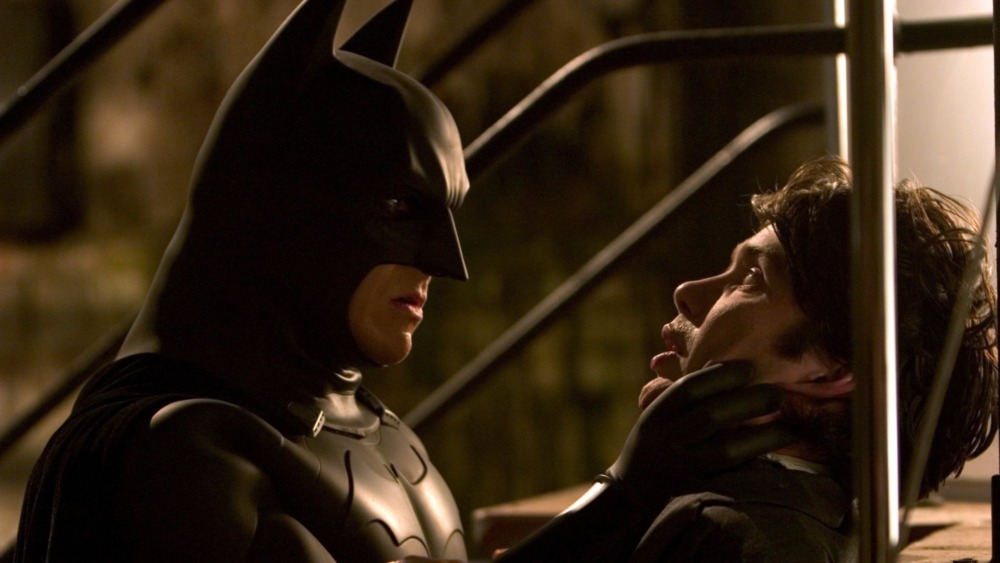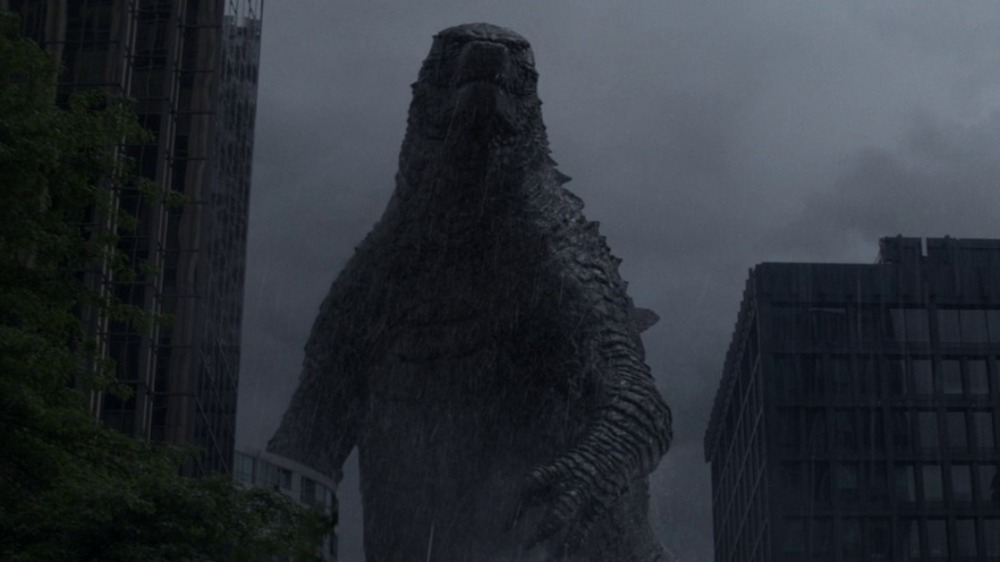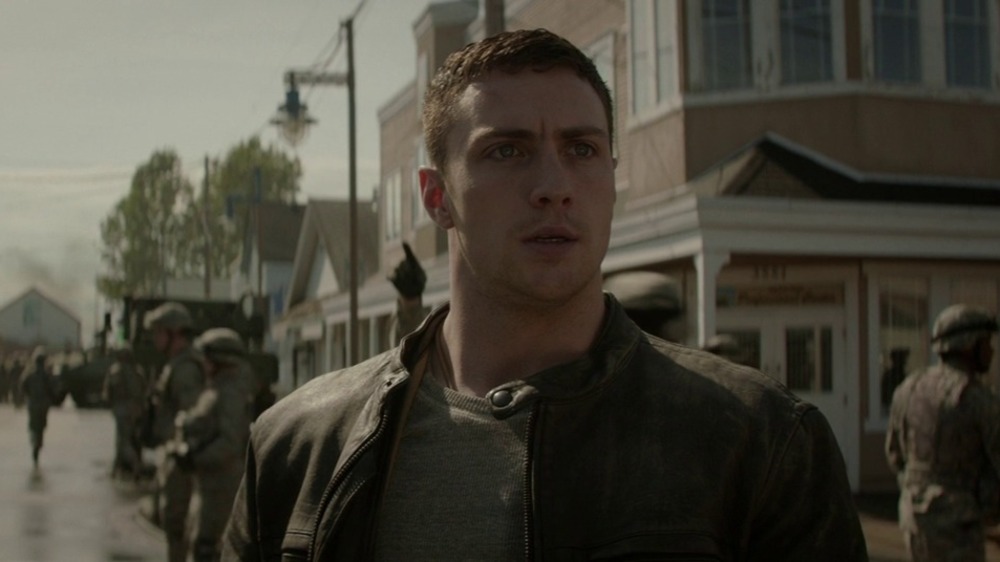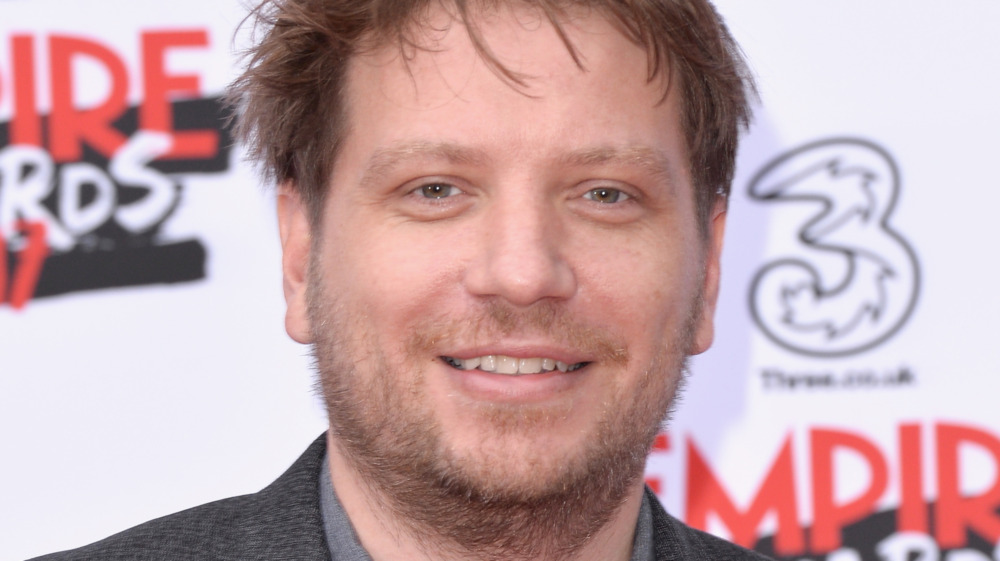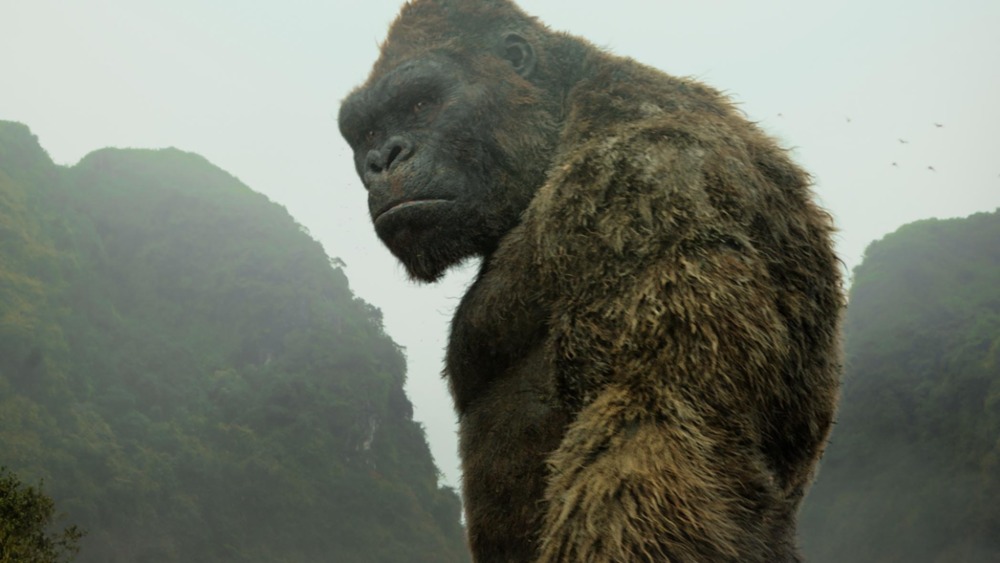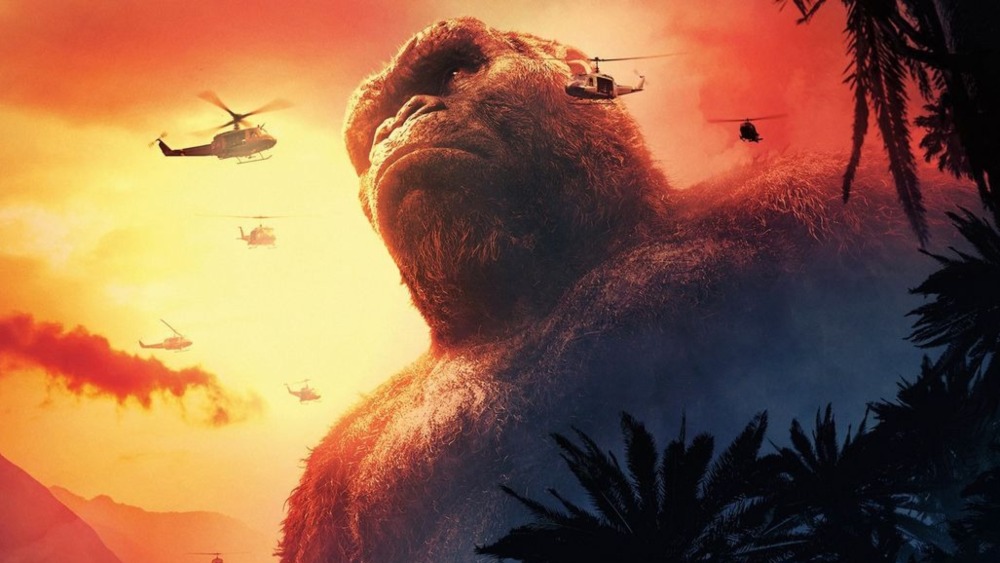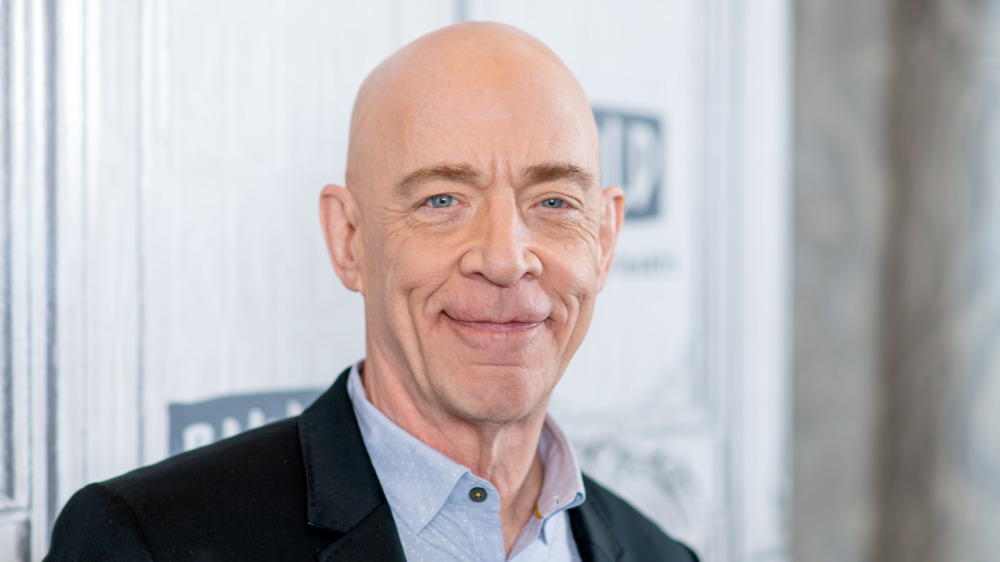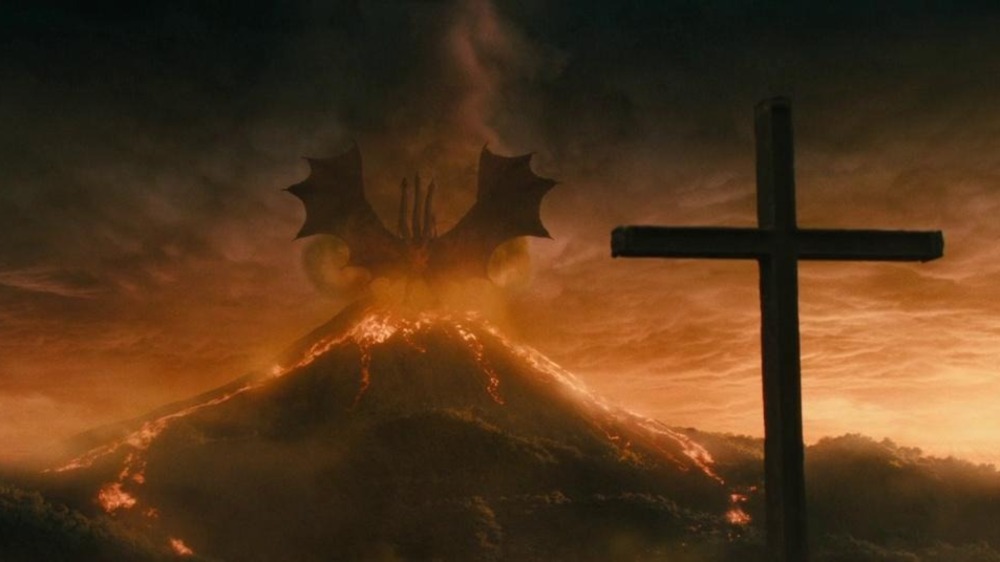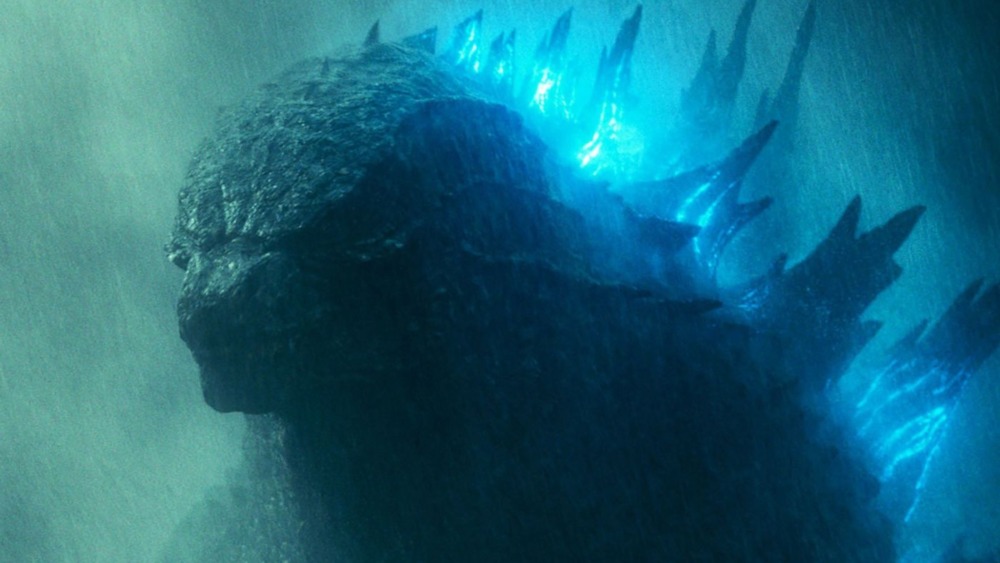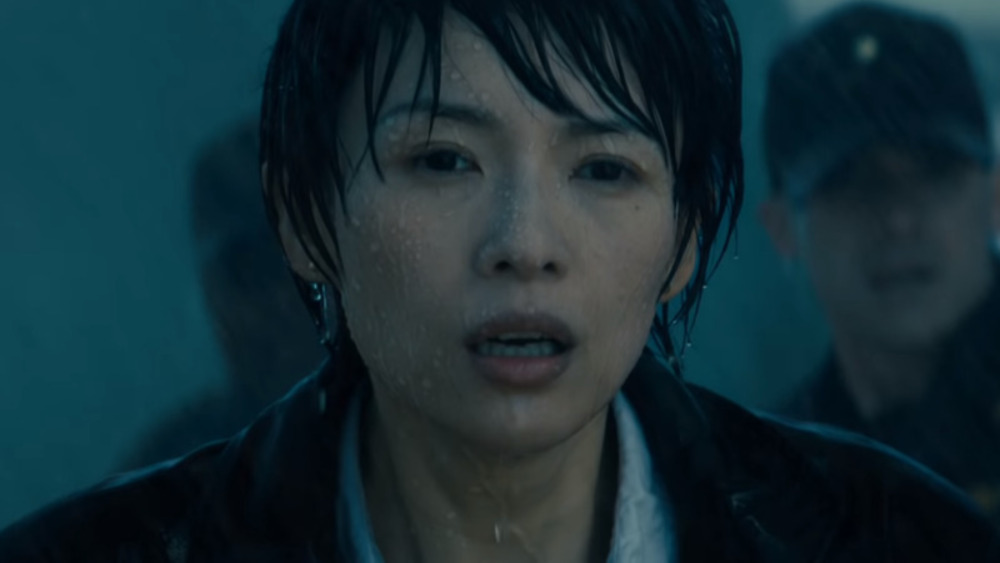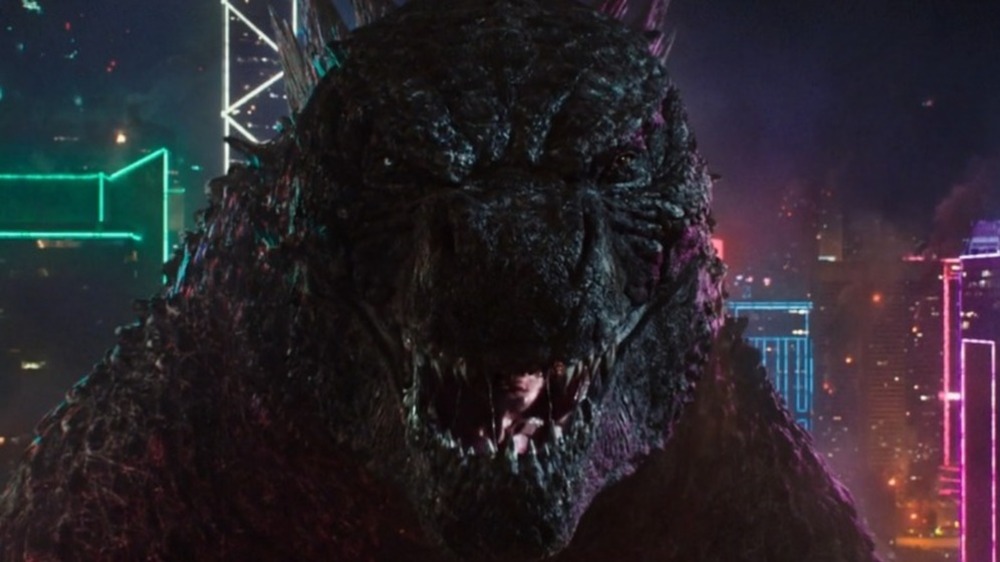The Untold Truth Of The MonsterVerse
Back in 1962, movie history was made when Godzilla and Kong first duked it out in the Japanese feature King Kong vs. Godzilla. Though it was the only time in the 20th century the two beasts crossed paths, their destinies were forever intertwined. The sight of that enormous lizard fighting that equally gigantic ape was a spectacle that audiences immediately latched onto, and this made it seem like a logical film to eventually remake.
So when Legendary Pictures announced that they'd secured the rights to make a new American version of Godzilla, you'd imagine that the ensuing MonsterVerse — encompassing solo and crossover movies revolving around these incarnations of Godzilla and Kong — would've been part of the plans from the get-go. But in reality, the history of the MonsterVerse is one littered with spur-of-the-moment creative decisions and fascinating tales about what it's like to create new versions of these famous monsters. Over nearly a decade of behind-the-scenes work, the MonsterVerse has created a dense history full of stories almost as entertaining as the monster mashes that make up this cinematic universe.
The MonsterVerse wasn't always a cinematic universe
The MonsterVerse is one of the few successful examples of an ongoing cinematic universe outside of the Marvel Cinematic Universe. However, despite this achievement, it's worth remembering that this saga wasn't always intended to be an expansive franchise. Screenwriter Max Borenstein, who's had a hand in writing the majority of these films, has noted that this franchise originally had much more manageable goals about simply relaunching the American Godzilla franchise. Just trying to shake off the critically reviled reputation of the last American Godzilla movie, the 1998 disaster, was enough of a challenge before tackling an expansive franchise.
However, while doing post-production on 2014's Godzilla, a plan for the future began brewing, all thanks to a powerful figure behind this kaiju movie. "Thomas Tull, who was CEO of Legendary at the time and the founder, was the real initial impetus and stan," Borenstein explained to Syfy Wire. "He was the reason that they were doing Godzilla in the first place. He said, 'Would you be interested in doing a new King Kong story that would be set on Skull Island?' ... His vision from the beginning was that one day we're gonna get to Godzilla versus Kong."
With Tull envisioning a big monster duel, plans for a new American Godzilla movie quickly expanded a scope. There weren't just further Godzilla sequels on the horizon — now, this beast would be a part of a larger franchise that would become the MonsterVerse.
Batman Begins was a guiding light for Godzilla
If you're a reboot that was made after 2005, chances are good that you're being made in the mold of Batman Begins. Christopher Nolan's first swing at the Caped Crusader was a risky one, with its grim tone and emphasis on character over spectacle. However, taking this leap of faith resulted in not only a box office hit but also the new model for rebooting major franchises that all other big blockbusters suddenly aspired to. In the case of Godzilla, the producers behind the monster movie made it no secret they wanted to make the Batman Begins of kaiju movies.
After all, the comparison here was especially apt. Godzilla's image was recovering from Roland Emmerich's widely hated blockbuster from the late '90s, while Batman Begins revitalized the Dark Knight's reputation after the disastrous failure of Joel Schumacher's Batman & Robin. And as producer Brian Rogers explained (via Den of Geek), "In terms of the reboot ... Legendary made it clear they wanted to pay homage to the original Godzilla character. ... But again, because it's a reboot, [they also wanted to] bring it into the 21st century. Like what Legendary did with the Batman, where they reinvented Batman, bringing in new elements to make it a stronger project."
That desire to inject a fresh approach into a familiar cinematic property in the mold of Batman Begins would extend into the film's marketing, which emphasized a somber tone reminiscent of the promotional materials for that inaugural Christopher Nolan film.
Cracking the design of a modern Godzilla
What does an American Godzilla look like? Well, if you're the 1998 movie from Roland Emmerich, you make the gigantic beast look like a cross between a T. rex and an iguana. But if you're the 2014 MonsterVerse kick-off movie Godzilla, you go for a look that blends the classical appearance with a few new flourishes grounded in reality.
Director Gareth Edwards explained that getting the look of this new Godzilla right was a tricky process that required both bold creative decisions and hewing close to previous takes on the character. "We went through all of the previous Godzillas [for inspiration]," Edwards explained. "We did hundreds of designs. I wanted to experiment with everything. ... The way I tried to view it was to imagine Godzilla was a real creature and someone from Toho saw him in the 1950s and ran back to the studio to make a movie about the creature and was trying their best to remember it and draw it. And in our film, you get to see him for real." With that desire conveyed, the 2014 Godzilla finally had a pathway to finalizing the design for its own take on this iconic monster.
Pinning down a leading man for the MonsterVerse's first film
Before Aaron Taylor-Johnson signed on to play the role of protagonist Ford Brody in Godzilla, the producers went through an assortment of other possible candidates to take on the part. In the first week of 2013, Variety broke down who was in the running for the role, noting that Henry Cavill — who was just months away at that point from headlining his first Superman movie — was reportedly a top pick by Legendary Entertainment brass. Meanwhile, director Gareth Edwards preferred indie darlings Scoot McNairy and Caleb Landry Jones for the role.
Interestingly, both Variety and The Hollywood Reporter mentioned that Joseph Gordon-Levitt was in the running for the part. In the early 2010s, Gordon-Levitt was somebody every major blockbuster was courting to headline their movie, with Guardians of the Galaxy and Ant-Man, for instance, lobbying hard for the 50/50 leading man to play their respective protagonists. Gordon-Levitt passed on those productions and Godzilla, and the other names initially rumored for Ford Brody never made the cut either.
In the end, Johnson feels like a compromise between the two types of casting for Brody. He wasn't quite an established franchise leading man like Gordon-Levitt, but having done a pair of Kick-Ass movies, he was also more recognizable than some of the more obscure choices for the part.
Initial plans for a Gareth Edwards Godzilla trilogy
When a movie makes money, Hollywood is gonna make a sequel. It's as reliable as water being wet. And it's an even more assured outcome when said film is a big-budget tentpole utilizing a familiar brand name like Godzilla. In the immediate wake of that film scoring what was, at the time, the second-biggest opening weekend of 2014, it was official. This new American take on the beloved kaiju was a smash hit and had shaken off the negative reputation of the 1998 Godzilla movie. And now, it was official that this new beast would be going on further adventures.
It didn't take long for the news of sequels to emerge. On Godzilla's third day of domestic release, Deadline reported that a sequel to Godzilla was already in production. While there weren't any details on who would be scripting the film, let alone what its story might be, the outlet did imply that Gareth Edwards was expected to return in the director's chair for the follow-up. A later piece from The Hollywood Reporter clarified that the plan wasn't just for Edwards to helm a sequel but a pair of follow-ups, creating a new Godzilla trilogy in the process.
However, the director eventually decided to step away from the MonsterVerse. According to Deadline, this was so he could focus on his "own gestating projects," and Edwards' departure from the franchise allowed Michael Dougherty to take his place for King of the Monsters.
Kong: Skull Island almost took a trip to the 1910s
Kong: Skull Island differentiated itself from most of the King Kong movies, as well as the inaugural MonsterVerse feature, by setting itself in the 1970s. But while Kong: Skull Island was always meant to be a period piece and the final cut leans heavily on its '70s backdrop, there were initially alternate plans for the film's time period. In fact, the era in which Kong: Skull Island was set fluctuated frequently during the earliest days production. At one point, the film actually took place in the 1910s, a whole two decades before the original 1933 King Kong movie debuted.
Original Kong screenwriter Max Borenstein explained where this setting came from while also divulging how the project briefly abandoned a period-era setting altogether. "I went back and set the film before the first King Kong movie in 1917 during World War I," Borenstein explained to Creative Screenwriting, adding, "We then redeveloped it again into a present-day story." However, none of these time periods seemed to click for the tale or for the Apocalypse Now influence that always guided the plot. The writer went on to note that the project would eventually return to the 1970s setting it was initially conceived in once director Jordan Vogt-Roberts hopped aboard the production.
Shaping the look for the MonsterVerse's Kong
Kong is a deceptively simple-looking monster. On the surface, he looks like a gigantic gorilla. How can that be hard to design? But as the people behind Kong: Skull Island found out, it was a challenge to create a new version of this character that managed to feel fresh without totally abandoning what audiences had come to love about Kong's design. It didn't help that the 2005 King Kong movie already set a high bar for what an entirely digital version of this creature could look like.
Director Jordan Vogt-Roberts eventually overcame these obstacles by finding creative inspiration in adhering to simplicity, as well as a desire to convey vivid emotions just from the exterior appearance of Kong. "I had a mandate that I wanted a kid to be able to doodle him on the back of a piece of homework and for his shapes to be simple and hopefully iconic enough that, like, a third-grader could draw that shape and you would know what it is," Vogt-Roberts said to Entertainment Weekly. "A big part of our Kong was I wanted to make something that gave the impression that he was a lonely god, he was a morose figure, lumbering around this island." With these concepts firmly established, the design of Kong: Skull Island's take on the primate was cemented. Despite the daunting task of providing a new look for a beloved creature, this MonsterVerse staple now had a design as thoughtful as the big ape himself.
Some big-name performers dropped out of Kong
In putting together the cast of Kong: Skull Island, a number of big-name performers came and went from the cast before the final ensemble came into place. Among the big name initially set for the cast of Kong: Skull Island were J.K. Simmons and Michael Keaton, both of them coming hot off 2014 award season glory for Whiplash and Birdman, respectively. These were big gets that signaled how Kong was assembling a star-studded cast in the mold of previous MonsterVerse title Godzilla, which featured Bryan Cranston, Juliette Binoche, and David Strathairn in its cast. The presence of Simmons in Kong was so cemented that the actor even openly talked about his excitement for doing the project despite his initial hesitations about there being a brand new Kong adventure.
A few months after both men were cast, though, all of that enthusiasm from Simmons turned out to be for naught. He and Keaton had both dropped out of Kong. The reason for their departure was the classic excuse of "scheduling conflicts." Eventually, Samuel L. Jackson and John C. Reilly would take over the roles previously occupied by Simmons and Keaton, respectively. The announcement that Jackson would end up in Kong also brought news that Oscar-nominee Tom Wilkinson was in talks to join the blockbuster in an undisclosed role. Of course, like Simmons and Keaton, Wilkinson would be another big-name actor who didn't end up visiting Skull Island.
Trading out MUTOs for Titans
In the 2014 Godzilla movie, Godzilla and the two big beasts he squared off against were referred to as MUTOs, a term that means Massive Unidentified Terrestrial Organisms. This quickly became shorthand in the MonsterVerse as a way of referring to any kind of gigantic monster, as seen by lines of dialogue from Monarch specialist Bill Randa (John Goodman) in Kong: Skull Island. At this point, it looked like the MonsterVerse had a piece of lingo to call its own, a term that would immediately resonate with moviegoers as something belonging to this franchise alone. However, this distinctive term wasn't long for the MonsterVerse.
In fact, the phrase MUTOs was thrown out the window when it came time for the follow-up project to Kong: Skull Island – Godzilla: King of the Monsters. Instead, Monarch scientists referred to Godzilla and newbie monsters like Mothra and King Ghidorah as Titans. It was a notable departure from established MonsterVerse lore but not one done without a distinct purpose. King of the Monsters writer/director Michael Dougherty explained on Twitter that this name change was due to the fact that MUTO moniker referred to creatures that hadn't been "identified." Now that Godzilla is "technically no longer a MUTO ... Monarch had to come up with a new term: Titan." This name has managed to endure in the MonsterVerse beyond King of the Monsters, as Titan is frequently utilized by characters all throughout Godzilla vs. Kong.
Godzilla: King of the Massively Long Monster Movie
Godzilla: King of the Monsters isn't a movie short on plot. The films includes everyone from multiple Titans to Monarch employees to a fractured family. With all these storylines, it's no wonder the final cut runs over 130 minutes in length. At one point in time, though, writer/director Michael Dougherty had a version of the film that went on even longer ... to the point of hitting the three-hour mark!
"There's a cut that I like to call Godzilla the Miniseries because it was basically three hours," Dougherty recalled (via Nerdist). "So there were much longer versions of the scenes that you saw, and as much as I would love to just bathe in the Godzilla universe for three hours, it dragged. So we had to find that right sweet spot as you put it, and it took a very, very long time." Dougherty's inclination to just revel in Godzilla lore were canceled out by his tendencies as a filmmaker to get a well-paced movie together. In the end, numerous scenes were left on the cutting room, and the three-hour cut of King of the Monsters remains a "what if?" proposition for kaiju fans.
Zhang Ziyi and her once-prominent MonsterVerse role
In the summer of 2017, the cast of Godzilla: King of the Monsters expanded to include Zhang Ziyi, an actress most famous for films like Hero and Crouching Tiger, Hidden Dragon. At the time, it was noted that this role wouldn't be a one-off appearance. Ziyi's character of Dr. Ilene Chen was planned to appear in further MonsterVerse movies after King of the Monsters, including Godzilla vs. Kong. It was eventually revealed that Ziyi would also portray Chen's twin sister, Dr. Ling, with the duo being a modern incarnation of the twin priestesses that follow Mothra around and sing her praises.
But while she was supposed to play new versions of two classic Toho characters, Ziyi didn't return for future MonsterVerse movies. Though listed in the cast of Godzilla vs. Kong prior to its release, she didn't appear in the final cut of the project. Per SyFy Wire, Ziyi actually did film scenes for the project, but they got cut during the editing process. No details on what Ziyi's scenes entailed nor the specific reasons for their exclusion have been revealed. If the MonsterVerse continues on after Godzilla vs. Kong, perhaps Dr. Ling can make her first appearance alongside her sister, maybe even singing a tune familiar to any die-hard fans of Mothra.
Toho's mandate for Godzilla to not get emotional
While watching the MonsterVerse movies, it can be easy to forget that the film's production company, Legendary Pictures, isn't the sole owner of the Godzilla property. Toho Pictures is the one that created and still owns the King of the Monsters. For these MonsterVerse movies, they merely license the character out to the Chinese-owned Legendary. And because of this deal, there are, as Godzilla vs. Kong director Adam Wingard learned, mandates on what Godzilla can and can't do.
Most notably, according to Wingard, Toho doesn't "want Godzilla to emote. They see him as like this god-like force of nature, and so to them, it's out of character if you have him reacting in a normal way to thing." However, Godzilla vs. Kong found loopholes where the filmmakers could get Godzilla to subtly express his feelings. As Wingard explained to the Reelblend podcast (via Screen Rant), "We definitely have some moments where I think Godzilla is more emotive in this film than he has been in any of the MonsterVerse movies. We just had to get clever with it."
The director also made sure to stress that, even with these restrictions on how Godzilla could behave, the folks over at Toho were still flexible creative partners when it came to making Godzilla vs. Kong. However, his comments about Godzilla being unable to emote makes it apparent that Toho doesn't want American filmmakers to break the monstrous toys it lends them.
